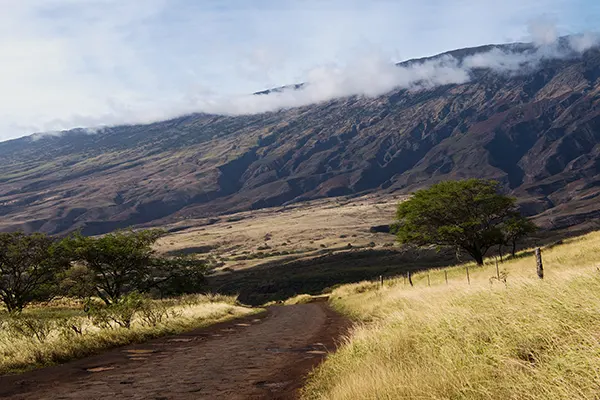Kaupo is one of the oldest regions of Maui, on the eastern end of the island. It’s sparsely populated and fairly remote, and beautiful.
Kaupo was once known as “Wahipana,” which translates to “a special place.” Fishing, farming, and ranching were the main occupations for the population.
The current residents of this small district continue living the simple peaceful lives of their ancestors.

Where is Kaupo Maui?
Table of Contents
Kaupo is a little town on the southeastern coast of Maui, along the coastline of Kahikinui.
Kaupo is just below the Kaupo Gap Trail, which winds up to the summit crater of Haleakala.
What does Kaupo mean in Hawaiian?
“Kaupo” refers to one of the varieties of bananas native to Hawaii. Another word for the kaupo banana is “waimūhea.”
But that’s not all. “Kaupo” also comes from the word “Koʻonāpou,” which, literally translated, means landing [of canoes] at night.
What Hiking Trail is in Kaupo?
Haleakala National Park hosts the hiking trail, Kaupo Gap, which runs through Kaupo ranch, and stretches along the Kaupo coastline.
Kaupo Gap connects with both the Lau’ulu Trail and the Halemau’u Trail. It continues down the volcano through steep and brushy terrain.
From the Kaupo Gap you can see the rim crater that was thought to be caused by an eruption—but was actually formed by the erosion of rain and wind.
Is Kapuo Gap an Easy Trail to Hike?
Kapuo Gap is not the easiest trail but it’s not the toughest one either, and can be quite rewarding. But the view of the islands and the ocean are a constant companion while crossing pristine forests, dry dense native vegetation, and surrounding wildlife.
Most visitors finish the path in a one-go tour and get a pickup at the end of the trail. It can also be turned into multiple-day backpacking trips, utilizing the park’s camping cabins—doing so requires permits.
Many hikers stay at the Paliku cabin for the night and start descending to the coast early in the morning to avoid the day’s heat.
What do I Need to be Careful of While Hiking Kapuo Gap?
- To not wander off the trail and look for NPS markers. The trail ends when you reach a dirt road and a trailhead. A couple of miles further and you will get to the Piilmani Highway 3.
- You have to be prepared to for inclement weather. We advise carrying enough water, strong hiking gear, and preferably going along with a guide.
- Fatigue and dehydration should be kept in constant check. The trail is quite long.
Are There Trail Fees I Need to pay?
Haleakala National Park charges a price to enter.
Fees are $30 per car or $25 per motorcycle.
Hiking on foot and bike charges are $15 per person. An annual pass is also available for purchase for $55.
How do I get to Kaupo Highway?
Getting to Kaupo Highway can be a little time consuming but the scenery along the way is so beautiful, time flies by.
- Exit the small Kaupo village, and follow Kaupo as leads you along the seaside.
- As you cross the last turn you will reach the end of the Kaupo highway (also known as Pi’ilani highway) at the Kalepa Gulch. You can further go on using the Hana highway.
- Without taking into account the few photo breaks, the total 36 km Piilani Highway takes roughly one hour to complete. If you want to conduct a major tour of the east side of Maui, continue along the road to Hana.
Staying a night at Hana is also a possibility although the accommodations can be a little expensive and you will have to cope with its unpredictable weather.
What is the Best Weather to Take This Trip?
Since the landscapes are the main attraction of this trip, wet weather would prevent you from taking full benefit of them. The ideal setting for a trip would be during the day time with sunlight so you can experience the wonderful ocean vistas.
Is the Pi’ilani Highway Paved?
The Pi’ilani Highway is one of the few must-drive highways in the world thanks to its breathtakingly beautiful views it offers. However, the drive is not easy because some areas are unpaved and others are rocky and rugged.
The road repeatedly narrows into a single lane. It isn’t a gravel road either. Rather, it’s old paved road that has been patched up again and again.
Make sure to sound your horn around any blind corners!
It is not recommended to drive on the Pi’ilani highway after or during heavy rainfall as sometimes vehicles can become stranded on unpaved sections (particularly after rains, or upslope the volcano of Haleakala), or the route may be closed for different reasons.
